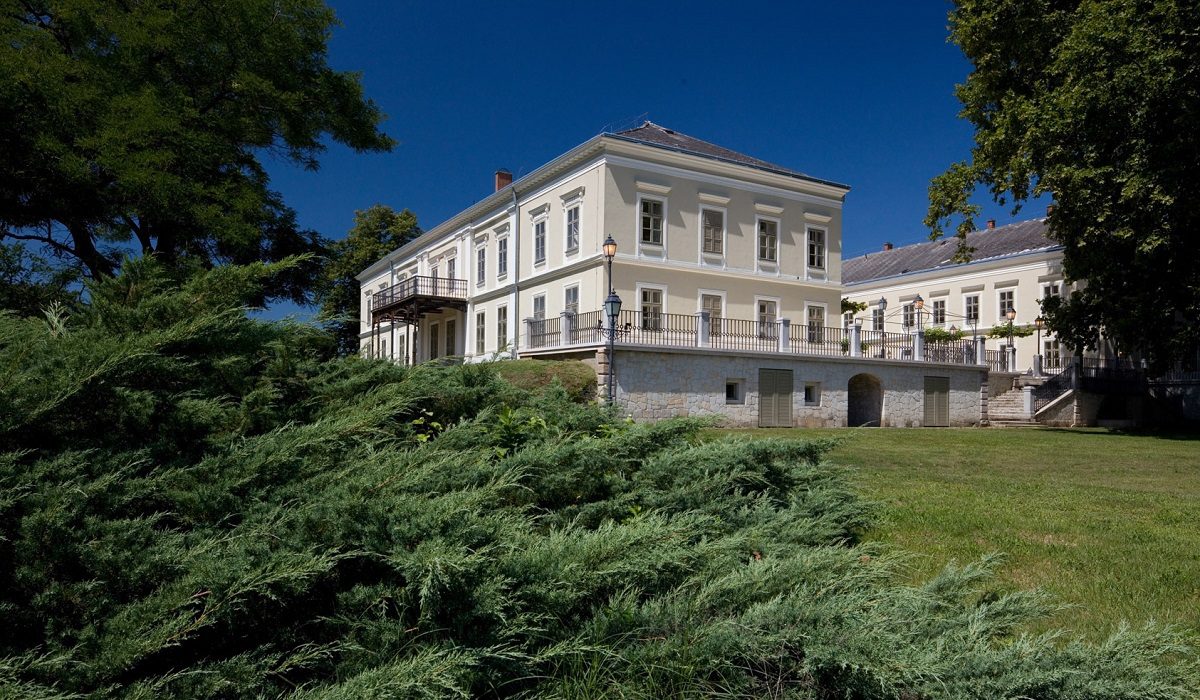Past salvaged into the future
Reconstruction Project of Degenfeld-Schonburg Castle, Téglás
Architect: Miklós Heppes
Text: Gábor Nagy
Photos: Tibor Zsitva
Respectable in its dimensions and scales, the single-storey Revivalist Classicist style castle was built in 1835 for Imre Degenfeld-Schonburg and his wife. The lateral structures surround an elevated grand court above the terrain which makes the appearance of the building extremely spectacular when viewed from the east.
The master of the new castle was the also the count of Szabolcs county, who was sentenced to prison because of his patriotic activities during the revolution in 1848, He only narrowly escaped capital punishment thanks to General Haynau’s changing mood. The next generation added a Romantique style driveway and a central projection on the west side in the 1870s. The very last aristocrat to reside in the castle was Pál Degenfeld, also acting as the chief curator of the district of the Reformed Church in Tiszántúl. Then the war broke out, followed by post-war Socialist era with destruction and the new function: in 1946 the building was remodelled to accommodate prisoners forced to work in the region. In 1995 the institution moved from here which accelerated decay to desperate conditions. In 2002 it was purchased by private individuals and the new owners commissioned architect Miklós Heppes to facelift it. The facade was restored to its old glory step by step by reconstructing the original architecture of the building, which was followed by the renovation of the interiors, to start with the ground floor only. The purpose of this project was to restore the original conditions as much as possible, including the historic configuration and spatial system. The castle now hosts a variety of events. The new open entrance on the western side makes it accessible also by car, from where one can go on from the roofed-in driveway to the open main entrance. The latter leads us to a lounge area articulated by niches and alcoves. This is joined by a semi-circular stairway the stone facework of which survived the hardest times intact. The original roofing and ceiling of the imposing grand hall as well its interior design were completely destroyed. What we can see now is a temporary condition: completion of the project as such still awaits. The new modern kitchen is now housed in the northern wing to replace the former one. The enfilade system of the southern wing has also been restored, which may also house an independent function thanks to its external accessibility. Stripped of later-on built masonry, the castle now breathes freely and prides itself showing off beautiful examples of preserving values such as the restored and complemented stone-framed doors, the existing original interior doors and windows, as well as reproductions of the windows made after the design of a single surviving model.
Leading architect: Miklós Heppes – Archiflex Stúdió
Fellow architects: András Lente, Johanna Jánossy, Erzsébet Steinbach
Structure: László Gerzsenyi – Pro-Nívó Kft.
Main contractor: KEVIÉP Kft.








